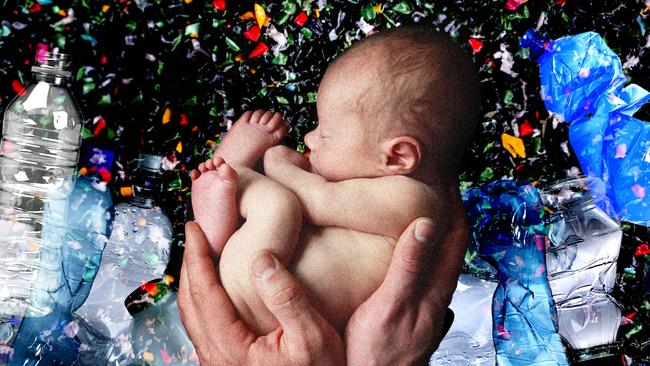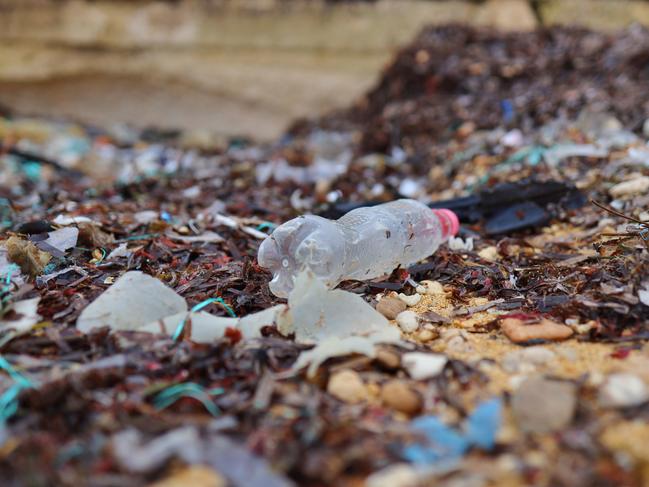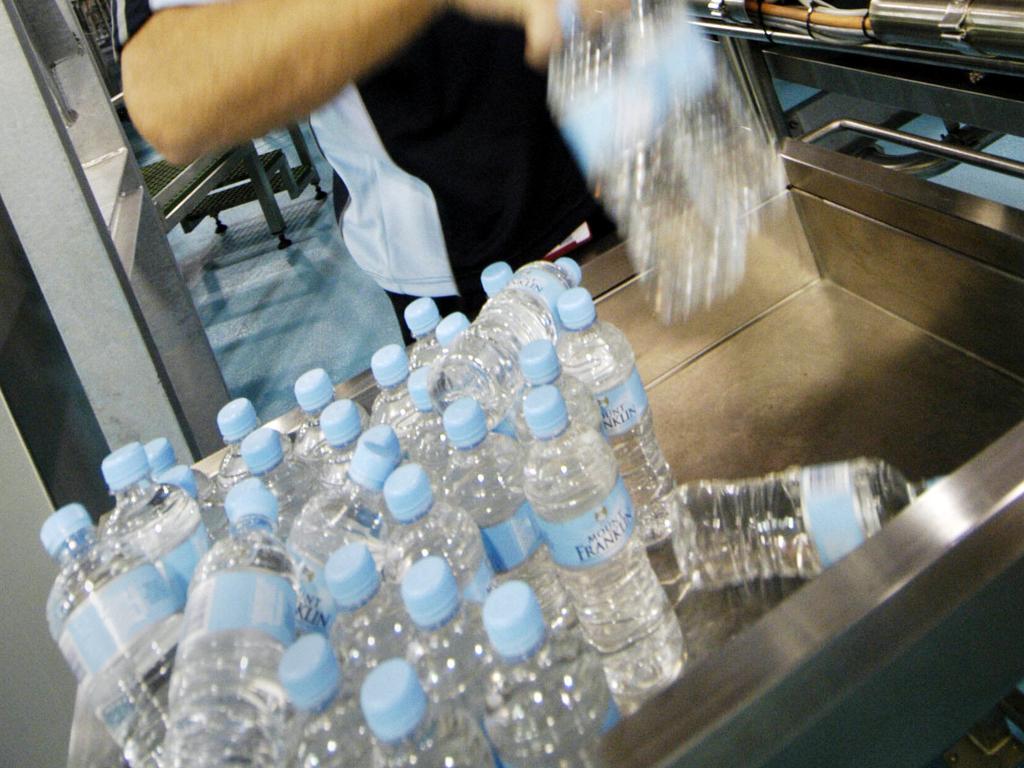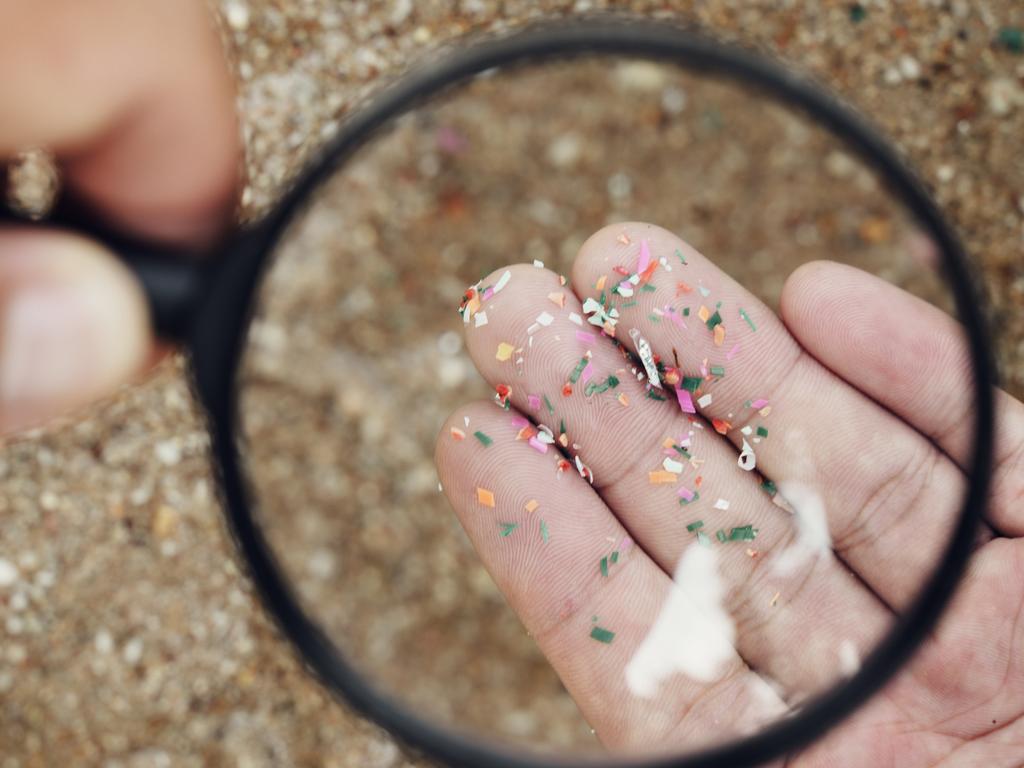Microplastics have been found in human placentas. Could they be causing harm to babies?
Plastic is everywhere now, including inside our bodies. But questions are being asked about the risk to babies.

Recent research has confirmed the worst fears of many of us involved in pregnancy and birth. The microplastics that we all now ingest and inhale as part of modern life may well be harming unborn babies.
Studies of human placentas have revealed that microplastics are present in significant quantities deep within them. Even more alarmingly, links are now being discovered between clogging of the placenta with microplastic particles and adverse outcomes for babies.
Microplastics are tiny fragments of plastic that may be generated during the manufacture of common items such as bottles or clothing. They also crumble away from discarded plastic in the environment. Most microplastic fragments are too small for the eye to see.
Plastic is everywhere in our modern world and almost impossible to escape. So many of the things we take for granted either are made of plastic, are transported in plastic, or are stored in plastic. Plastics are so common that we barely give this a thought. Plastic is everywhere – including inside of our bodies these days.

That the microplastics we consume or breathe in may travel around our bodies and lodge deep within our tissues has become well known over the past decade. Yet the full extent of what these plastic particles are doing to our bodies – and our health – is only just being discovered.
Researchers have been deploying sophisticated methods of detecting microplastics. Very recent searches have discovered that the microplastics that pregnant women ingest end up flowing into the placenta, the organ that supplies a baby with oxygen and nutrition before birth.
Some alarming research has discovered that the presence of microplastics in the placenta of a mother may affect the normal growth of a baby and even, potentially, the baby’s condition at birth.
To make matters worse, microplastics have been found in the first bowel motions that babies pass, raising the alarming possibility that these particles are crossing the placenta from the mother’s blood supply to her unborn baby.
The situation also seems to be worsening. When placentas from births that occurred many years ago are compared with those of recent pregnancies, the likelihood of microplastics being found has almost doubled. In some studies, every single placenta examined now carries microplastics.
Around the world, more than 400 million tonnes of plastic is manufactured every year and that amount is only increasing. Unfortunately, as much as 360 million tonnes of plastic is thrown away yearly too. While recycling of plastic is starting to occur, much of our discarded plastic ends up in the environment.
These are deeply concerning findings. The health of our next generation is of the utmost importance. Every pregnant woman wants to know that she is doing everything possible to protect her baby. Microplastics, though, are a foe that we cannot see. They have even been identified in breast milk.

It is likely that the most common avoidable sources of microplastics for most pregnant women will be in food and drink. For example, bottled water is a notorious source of microplastic particles. Australians have the second-highest consumption of bottled water on the planet, second only to Singaporeans.
We also eat a great deal of microplastic material. Food containers and wrappings release microplastic particles. Adding to this risk, the animals we eat also consume microplastics from the environment and the water they drink. As these particles accumulate in animals in the food chain, we then eat animal meat and products.
There is evidence that heating or washing takeaway food containers releases microplastic particles. This aside, there is also emerging evidence that refrigerating food stored in plastic could add microplastics to our diets.
Once absorbed into the bloodstream, microplastics can travel around the body and, unsurprisingly, particles have been found in multiple human tissues. When these fragments lodge in our organs they can promote inflammation or alter the way cells function. It is even suggested that they may affect our immune systems.

Mothers-to-be may not be the only ones at risk. Research has shown that levels of microplastic-related chemicals found in a man’s body are associated with changes in fertility and sperm quality. This has been proposed as one reason for the increasing rate of infertility seen around the world.
We live in the age of plastic, and the benefits of modern life owe a great deal to this fact. It seems that microplastics will always now be part of our lives. Understanding what their effects on us are, and how they enter our bodies, is important and more must be learned.
The true and full extent of microplastics and potential harms in pregnancy are still being discovered. Until we have a clearer picture, it is important that women consider their exposure to potentially contaminated food and drink.
Steve Robson is professor of obstetrics and gynaecology at the Australian National University and former president of the Australian Medical Association. He is a board member of the National Health and Medical Research Council and a co-author of research into outcomes of public and private maternity care.
This column is published for information purposes only. It is not intended to be used as medical advice and should not be relied on as a substitute for independent professional advice about your personal health or a medical condition from your doctor or other qualified health professional.
References
• Impact of Microplastics on Pregnancy and Fetal Development: A Systematic Review





To join the conversation, please log in. Don't have an account? Register
Join the conversation, you are commenting as Logout